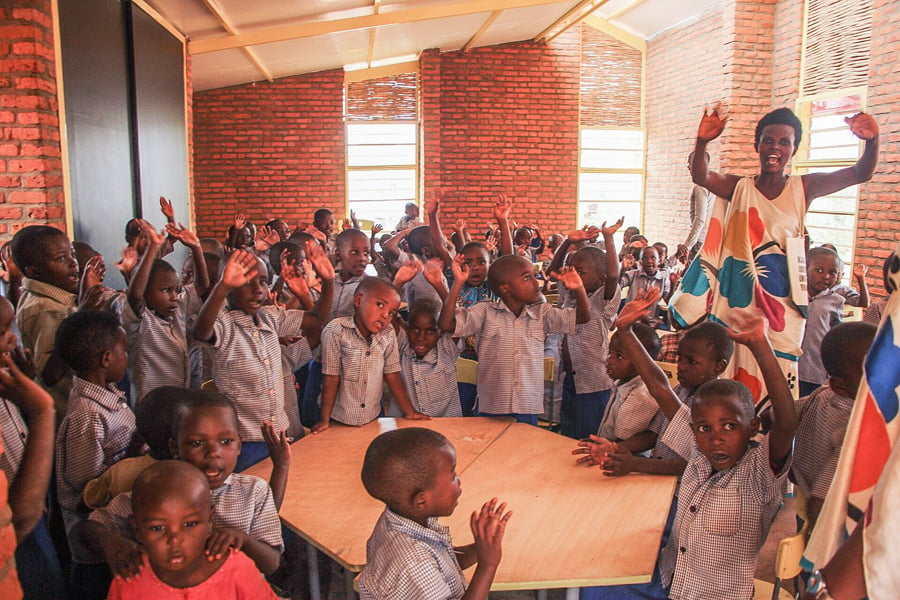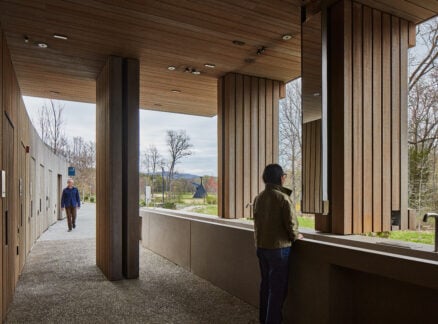
February 28, 2020
In Rwanda, Coffee Farmers Envision a Low-Carbon Pre-Primary School
The interdisciplinary firm Creative Assemblages worked with a community in Rwanda to construct a school with recycled and locally sourced material.

With Rwanda’s coffee industry contributing to nearly 24 percent of its total agricultural exports in the last decade, the small landlocked country has become one of the world’s leading coffee producers. This is in large part thanks to the Rwanda Trading Company (RTC), which had, up until a few years ago, operated out of the capital city of Kigali. The company decided to relocate to a special economic zone and began dismantling its former factory when an opportunity presented itself: Can all this industrial scrap be diverted from the landfill to more productive ends?
The idea had been planted by RTC-employed coffee farmers in Rwanda’s Western Province. Members of the Mwito community proposed using the scrap material to build a youth center in the area. RTC approved, tapping the Kampala, Uganda–based design practice Creative Assemblages to spearhead the project.

The pre-primary school is situated on steep terrain that overlooks the nearby lakes and, to the west, the mountains of the Congo. The complex comprises three classrooms, a kitchen, and a multipurpose flex-space. In the garden, students and teachers grow their own produce using fertilizer from composting toilets. A rock-climbing wall on a brightly colored playground provides a fun outlet for the youngsters.
With achieving net-zero in mind, Creative Assemblages recycled over half of the construction materials collected from RTC, namely metal and plywood. Otherwise, components such as fired brick, sand, and gravel were sourced from neighboring communities. The school’s overall carbon footprint is further reduced by limiting the use of cement to the flooring and masonry.
Sited on land donated from a district church, the project had to satisfy numerous stakeholders. Lead architect Nerea Amoros Elorduy noted some challenges among the religious and community leaders in power dynamics and decision-making. But the school, which opened last year, is steadily gaining support from parents and the rest of the community, Elorduy says. “What I will be the most proud of is seeing all the classrooms full and the caregivers and pupils happy with the space.”
You may also enjoy “Hopkins Architects’ Geology Park Outside Sharjah Finds Inspiration in the Region’s Archeology”
Would you like to comment on this article? Send your thoughts to: [email protected]
















